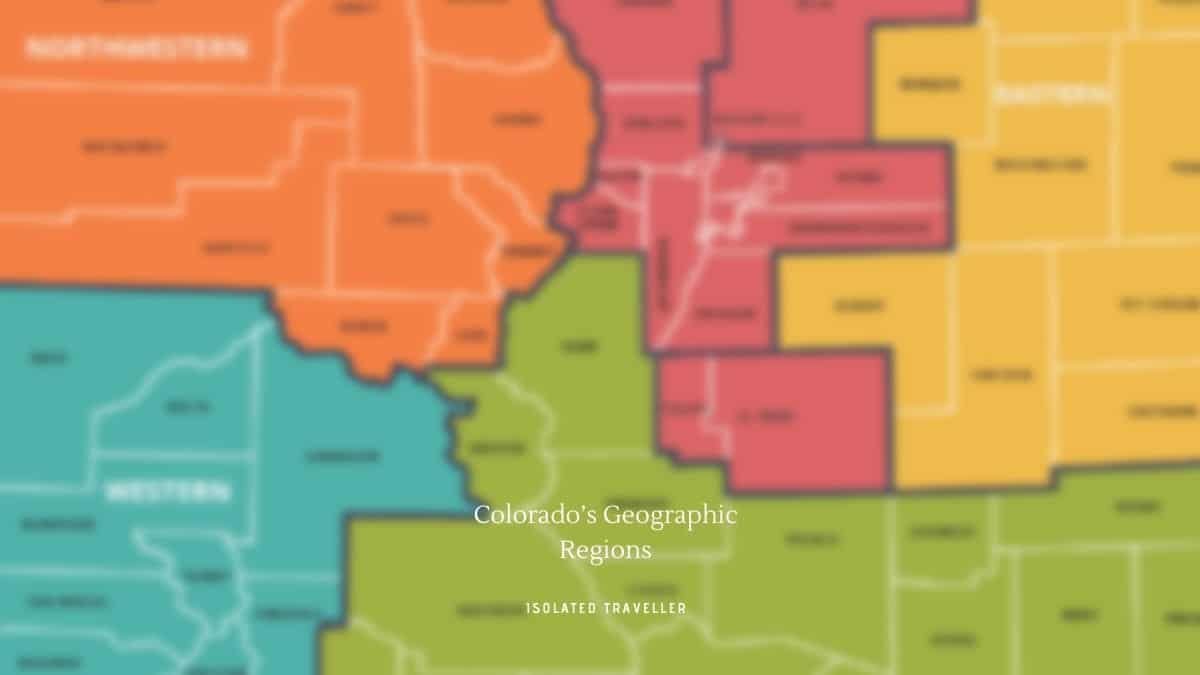Colorado’s geographic regions
Colorado is a state in the western United States. Colorado is bordered by Wyoming to the north, Nebraska to the northeast, Kansas to the east, Oklahoma to the southeast, New Mexico to the south and Utah at its southwest corner. Colorado is also known as “The Centennial State” because it became a state on January 1, 1876.
It is located within North America’s Four Corners region. Colorado is part of the Great Plains region and has many different landscapes including alpine mountains and desert lands that make up much of eastern Colorado. The Rocky Mountains contain three of North America’s fourteeners: Mount Elbert at 14,440 feet, Longs Peak at 14255 feet and Pike’s Peak at 14080 ft.
Colorado Plateau
The Colorado Plateau is one of the largest regions in Colorado, covering almost all of northern and western Colorado. It’s made up of flatlands that are surrounded by steep mountains and rock formations. The plateau is bordered by the Rocky Mountains on the east and the Grand Canyon on the west.
Rocky Mountains
The Rocky Mountains are the highest in the United States, with Mt. Elbert topping out at 14,433 feet (4,400 meters). They are also young and geologically active—they formed only 70 million years ago. The Rockies are densely populated by humans and popular destinations for outdoor recreation.
Great Plains
The Great Plains are a broad expanse of flat land, much of it covered in prairie, steppe, and grassland, which lies west of the Mississippi River. It includes areas in portions of Alberta and Saskatchewan in Canada; North Dakota, South Dakota, Nebraska and Kansas in the United States; and southern Manitoba in Manitoba. The region is known for supporting extensive cattle ranching and dry farming.
The region encompasses several major climate types: semiarid steppe (Greater High Plains), semiarid desert (Northern High Plains), humid continental climate (Southern High Plains), humid subtropical climate (Lower Rio Grande Valley) and humid temperate oceanic climate (Central Colorado Plateau).
Intermontane Basin
The Intermontane Basin is a large, nearly flat region that makes up the western half of Colorado. It fills an area roughly between the Front Range and the Wasatch Mountains in Utah, and it’s home to two major cities: Colorado Springs and Pueblo.
The Intermontane Basin is a geologic basin—a low-lying region that was once submerged by water during ancient times. The water eventually drained away, leaving behind layers of sediment that have been gradually eroded by windstorms over time. Today this distinctive landscape supports agriculture as well as reservoirs for drinking water and irrigation systems used by farmers throughout much of Colorado’s Front Range communities.
Southwestern Tablelands
The Southwestern Tablelands is a physiographic region of Colorado. It lies in the eastern part of the state and is bounded on the north by the Front Range, on the east by the Great Plains, and on the south by New Mexico (which was once part of Mexico). The region includes some of Colorado’s most well-known national parks: Mesa Verde National Park, Dinosaur National Monument and Rocky Mountain National Park.
The climate here is semiarid with summer highs averaging in excess of 100 degrees Fahrenheit (38°C) during July and August. Winter temperatures often drop below zero degrees Fahrenheit (-18°C) in areas at high altitudes like Pikes Peak. Precipitation is scarce except during thunderstorms or severe weather events such as blizzards or hailstorms.
The landform consists mostly of gently rolling hills covered with sagebrush grassland interspersed with canyons carved by erosion from watercourses such as Big Sandy Creek which flows through this area before joining up with other creeks that eventually form North Fork Rio Grande River downstream from Chama River Gorge where it exits New Mexico State Line onto Southern Colorado Plateau via road access route CO-152
San Luis Valley
The San Luis Valley is a large valley in Southwestern Colorado, bordered by the Sangre de Cristo Mountains to the east, the San Juan Mountains to the west, and the Wet Mountains to the south. It’s known as a high desert because it has an arid climate with low precipitation; most of its water comes from snowmelt on surrounding mountains.
The San Luis Valley used to be home to many cultures of indigenous people like Utes and Shoshones who were nomadic hunter-gatherers until Spanish explorers arrived in 1541. The first Europeans came from New Mexico during colonial times looking for gold, but instead found silver deposits that led them back across state lines into what we now call Colorado! Eventually, miners settled here permanently after 1859 when gold was discovered at California Gulch in Conejos County—this area became known as Leadville (named after lead because miners were digging for other metals).


